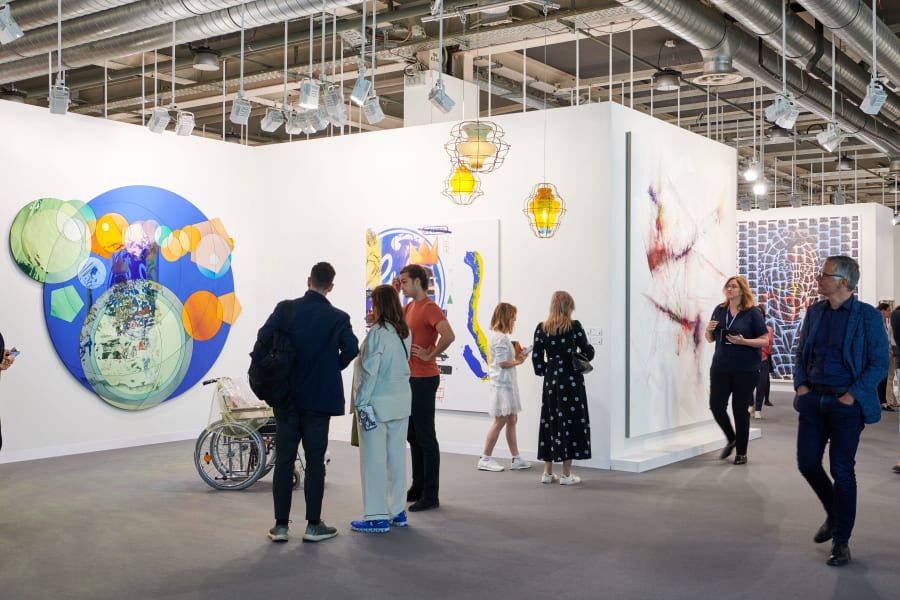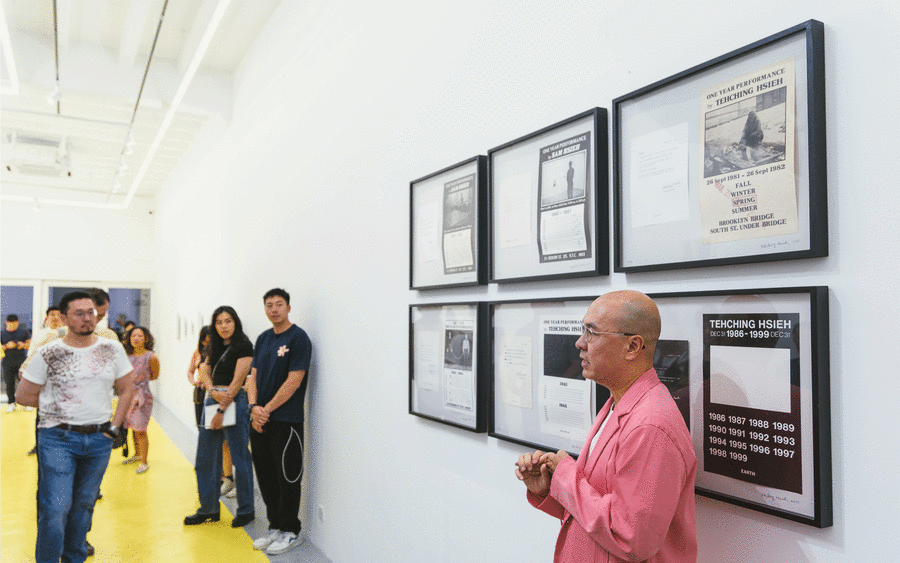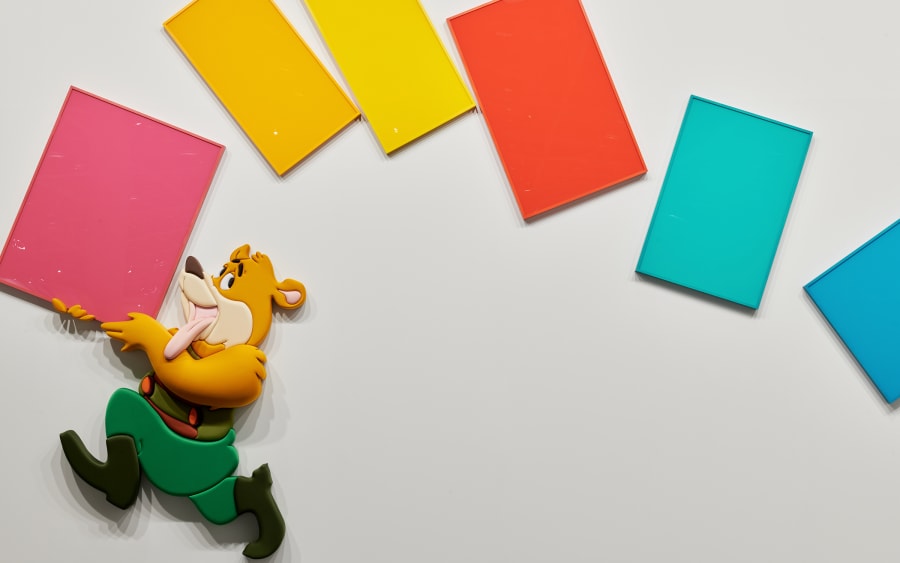After a difficult few years, Japan’s art market is striking an optimistic note. According to The Art Basel and UBS Survey of Global Collecting 2023, high-net-worth (HNW) collectors are showing strong interest in artists from Japan. When looking to buy outside their own local markets, collectors in eight of 11 countries chose Japan as their first or second region of interest for future purchases.
This came as a surprise to some local galleries. ‘Japanese art discourse is built within the Japanese language, and a lot of Japanese people do not use English, which is the language of the international art discourse,’ says Atsuko Ninagawa, owner of Take Ninagawa gallery in Higashi-Azabu, Tokyo. ‘I would think the art would be difficult to understand by an international audience, and vice versa.’
Yutaka Kikutake, director of Yutaka Kikutake Gallery in the Roppongi district of Tokyo, echoed this sentiment, saying he was surprised but heartened by the survey results. Until about 10 years ago, there was great interest in Japanese art from the 1960s and 1970s, particularly the Mono-ha and Gutai groups. But that trend has been on a decline, explains Kikutake.
The weak yen could be one contributor to the renewed push to buy Japanese art. However, Japan’s art market is well known for being challenging both for galleries and buyers. Japanese law requires galleries to pay customs and a 10% sales tax up front on artworks, a cost which is later passed to the buyer upon the sale of the work. Until recently, Hong Kong, with its lack of a customs tax, was the go-to art hub of the region, but with COVID-19-related travel restrictions and lockdowns in place until recently, the Asian art market has looked elsewhere to cities such as Seoul, rather than turning to Tokyo.
Perrotin Tokyo senior director Stéphanie Vaillant was not at all surprised by the uptick. She says the energy in the market has changed drastically since the gallery opened about 7 years ago. And since COVID-19 has died down, she’s found a growing dynamism in the Tokyo scene, especially over the past year.
Vaillant points to a concentration of new large-scale events, including the Tokyo Gendai art fair, Art Collaboration Kyoto, and Art Week Tokyo. In addition, developer Mori Building’s new complex of three skyscrapers, Azabudai Hills, is bringing in new galleries; Pace Tokyo will open there in the spring. Vaillant feels that the art community is building and coalescing; in addition to Perrotin, she points to Blum Tokyo in Shibuya, and Ceysson & Bénétière, which announced last week it will open a space in Ginza. At the Piramide building in Roppongi, where Perrotin is based, one can also find Yutaka Kikutake Gallery, Ota Fine Arts, and a host of others.
Though Tokyo is famous for its transport system, it remains a large metropolis with widely dispersed art spaces, which makes navigation difficult for buyers seeking to cover the entire city. Creating central art locations with collaborations and community events makes it easier for domestic as well as international buyers to tour galleries, says Vaillant.
As for the art itself, global exhibitions of the likes of Yayoi Kusama, Takashi Murakami, Kohei Nawa, and Hiroshi Sugimoto have laid the groundwork for engagement with contemporary Japanese art outside the country. In turn, these big names have brought foot traffic into Japan, helping give exposure to lesser-known artists. From the younger generation, artists such as Yuko Mohri, who shows with Yutaka Kikutake Gallery and will represent Japan at the 2024 Venice Biennale, are also keen to travel the world and build their own relationships with buyers.
Gallerists also said they believe that collectors are driven by their own special relationship with or interest in Japanese culture more broadly. People around the world who grew up with Japanese pop culture, including manga and anime, and with a certain admiration for the Japanese aesthetic, are now in their 30s and 40s and have money to spend, says Vaillant.
Kikutake echoes this, saying that buyers want to go deeper into Japanese culture. He speculates that the popularity of Naoshima – a hard-to-access island in western Japan with its own art festival, a complex of museums, and site-specific installations – has had a part to play. For art VIPs today, an art tour of Japan would include not only Tokyo and Kyoto but almost certainly the art island.
The Naoshima model has spread all over the country, turning rural areas and smaller cities into art attractions with site-specific works. Buyers visiting Japan from abroad travel to these remote places in the countryside and are exposed to a history and culture beyond the metropolises. They can feel the tie between art and culture, says Kikutake. ‘Japanese artworks tend to have a strong sense of context,’ he says. ‘So, it would be nice if that aspect were appreciated.’
Ninagawa also thinks that buyers might see Japan as a place of yet-to-be-discovered potential. ‘While the outlines of Japan’s Modern and contemporary art history have been sketched out through groundbreaking exhibitions like ‘Japanese Art after 1945: Scream against the Sky’[staged between 1994 and 1995 at the Yokohama Museum of Art, the Guggenheim Museum in New York, and the San Francisco Museum of Modern Art] and major figures like Yayoi Kusama and Atsuko Tanaka enjoy widespread acclaim, there are still many historic practices that have yet to be shared internationally,’ she says. Ninagawa also points to the diversity of practices in the Japanese art scene: ‘There are so many fascinating intersections between international practices and local sensibilities as well as fields like craft, design, manga, and sound/music.’
For better or worse, Kikutake says, Japanese artists are also less likely to tackle social issues explicitly, compared to their Western counterparts. They focus on more inward-looking issues, he says, turning to fundamental human senses, for example, which could be appealing to some collectors.
Vaillant says that Japanese art often deals with uncertainty and chaos, something that people all over the world are feeling now. ‘If you think about current global issues and concerns, for instance ecology, Japan is offering an answer. In a way, they are always looking at their past, their heritage, their roots. They are also very into nature and at the same time technology. All these topics are right now having a very strong echo in contemporary society,’ she says.
‘In Japan you have all these elements that make you feel like everything is temporary; look at the earthquakes or tsunamis. That could be another reason why Japan holds a kind of fascination. And why people feel some relief and a kind of comfort when they go to Japan, because they find some answers about their own fields and concerns about the world,’ says Vaillant.
Thu-Huong Ha is a writer based in Tokyo, and you can follow her on Instagram: instagram.com/whatthusee
Caption for full-bleed image: Detail of a work by Shinro Ohtake, presented by Take Ninagawa at Paris+ par Art Basel 2023.


